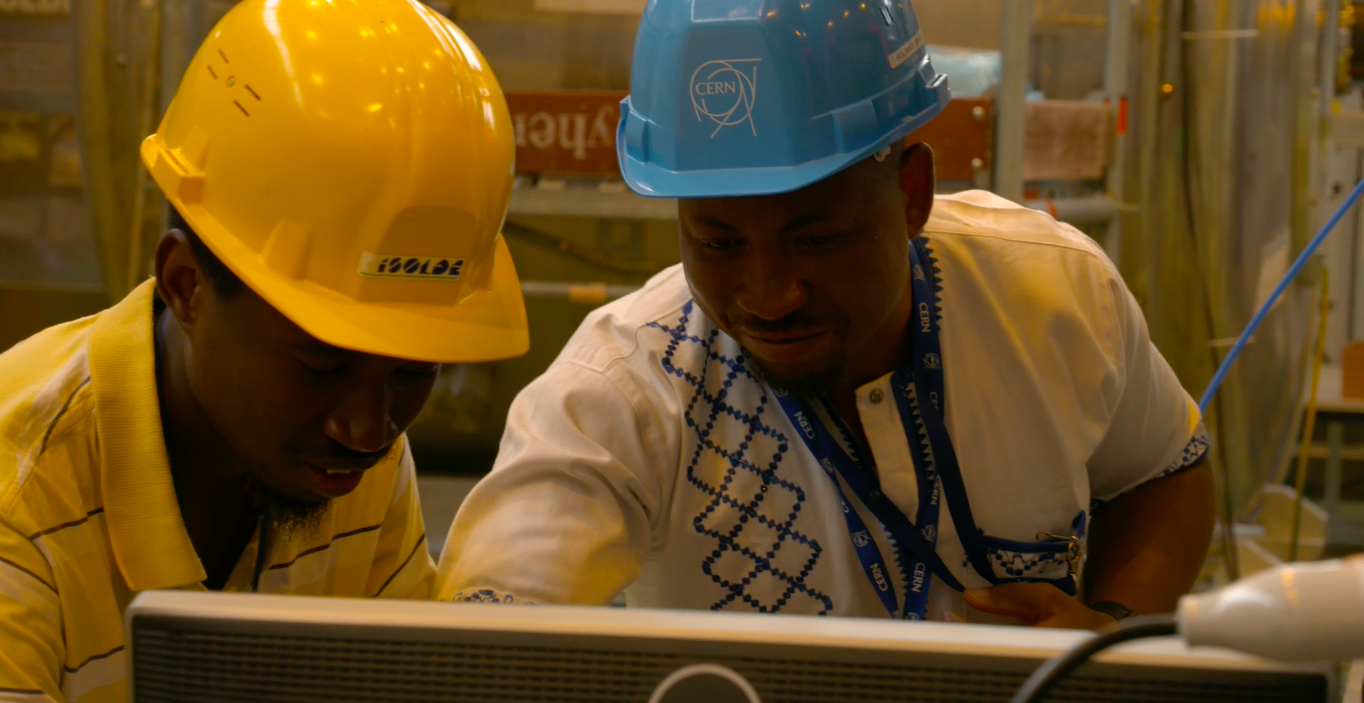Meet ISOLDE: Fresh faces bring fresh ideas
By: Harriet Jarlett
To celebrate 50 years of ISOLDE physics, the third article in our Meet ISOLDE series looks at how people shape the facility and the importance of low-energy beams
Monika Piersa leans across the coffee table in CERN’s cafeteria like she’s sharing a secret:
“Anytime someone’s surprised nuclear physics takes place at CERN, I tell them why it makes sense – it helps with astrophysics, nuclear power, etc. It’s just as important as the Higgs!”
As a summer student in 2016, Monika worked at CERN’s longest running experimental facility, ISOLDE (Isotope mass Separator On-Line). This week, the facility celebrates fifty years of physics, low-energy nuclear physics to be precise.
CERN is best known for physics at high energies. Indeed, the same accelerators that feed ISOLDE – originally the Synchrocyclotron (the SC) and now the Proton Synchrotron Booster (PSB) – also provide protons for CERN’s flagship Large Hadron Collider (LHC). But despite being less widely known, up to 60 per cent of all the protons that enter the accelerator chain go to ISOLDE.
The low-energy facility uses so many of the protons because, by bombarding ISOLDE’s target with as many protons as possible, the facility can produce more exotic nuclear isotopes. These isotopes are then separated and delivered via a dozen low-energy beamlines to many experimental setups.

Everything changes
ISOLDE is unique not just because it is able to bombard the target with high-energy protons at 1.4 GeV, but also because the experimental hall is in a constant state of flux. Over 50 different physics experiments are performed here each year.
Some of these experiments are “travelling” systems, which come to ISOLDE shortly before their scheduled beam time, then leave again once their data collection finishes, while several other experiments have chosen ISOLDE as their home base and stay there permanently.
“Physics is a never-ending story, when you learn something, it leaves you with more questions.”
- Monika Piersa, summer student at ISOLDE
“ISOLDE is special for its range of experiments. There are some in solid-state physics looking at superconductors that will lead to faster or more energy-efficient computers, or biophysics and medical physics experiments looking into new cancer treatments, or experiments in nuclear astrophysics that will teach us what’s going on inside a star. Nuclear physics is applied everywhere,” says Thomas Day Goodacre, who worked on the laser set up for the RILIS ion source at ISOLDE.

“Fundamentally ISOLDE is a user facility and anyone can submit an idea for an experiment. Any countries who are members of the ISOLDE collaboration, whether or not they are members of CERN, can submit proposals to the ISOLDE Programme Advisory Board (called INTC). The ISOLDE INTC is made up of people from other facilities around the world and they’re the ones who decide if a new experiment should happen. It’s set up to avoid bias,” he continues.
Building communities
The travelling nature of the multiple experiments at the facility, as well as a high turnover of research groups contributes to a constant state of flux in the ISOLDE experimental hall.
“It keeps things fresh, because of people coming and going. It’s flexible, you can’t settle into one way of running, we have around 500 users with constant turnover, which leads to new demands and the infrastructure being upgraded. The multiuser component is important to ISOLDE, for creativity and ideas,” says Karl Johnston, ISOLDE’s physics coordinator.

“There is a huge community demand on ISOLDE, the demand for beam time is really high; we don’t physically have the time to study more isotopes. So it’s a good thing more facilities are being built around the world,” says Razvan Lica, a PhD student at ISOLDE, adding that the draw for some researchers to work at ISOLDE is helped by the opportunity to live somewhere filled with beautiful nature, Switzerland.
Knowing there’s always more to find out, and with such diverse applications, ISOLDE researchers are pushing to learn even more with the next step for ISOLDE, an upgrade called High Intensity and Energy Isolde, or HIE-ISOLDE.
“Physics is a never-ending story,” explains Monika. “When you learn something, it leaves you with more questions. You’re constantly reaching cliffhangers, asking what next?”
This is part 3 of the series to celebrate fifty years of physics at ISOLDE. Read more about HIE-ISOLDE and the high-energy experiments taking place at CERN’s ISOLDE facility in part four. Or read the rest of the series.

